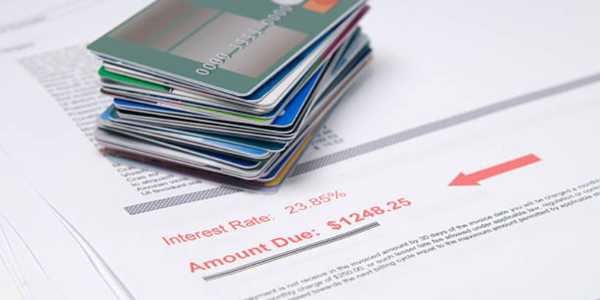Career & Education
2025 Credit Card Industry Trends: What Consumers Need To Know
The credit card industry in 2025 is not what it used to be. The world is moving fast, and financial institutions are not taking a break. They are watching your spending patterns, understanding your frustrations, and doubling down on what works. But not everything being done in the name of "innovation" is for the consumer's benefit. Some of these trends are double-edged swords, and it's time for consumers to understand what's going on.
The credit card industry in 2025 is not what it used to be. The world is moving fast, and financial institutions are not taking a break. They are watching your spending patterns, understanding your frustrations, and doubling down on what works. But not everything being done in the name of "innovation" is for the consumer's benefit. Some of these trends are double-edged swords, and it's time for consumers to understand what's going on.
AI and Machine Learning Are Shaping Approval Decisions
If you still think your credit card application is being manually reviewed by some old banker with glasses flipping through a file, think again. Algorithms are in charge now. In 2025, more credit card companies are relying heavily on machine learning models to decide who gets approved and who doesn’t.

These systems no longer look at credit scores. They analyze purchasing behaviours, social media patterns, geolocation history, and even browser usage habits. Did you miss a utility bill payment? I opened ten tabs comparing gas prices. The system knows.
It's becoming increasingly intelligent and predictive. That's great if you've got a clean digital trail. But for those who are inconsistent, financially stressed, or just private by nature, this new system may work against you. Consumers must be more intentional about their online behaviour, whether they like it or not.
Customized Reward Programs Are Getting Smarter – and Sneakier
Cashback and reward programs are being "personalized" based on data. This means your rewards are based on what issuers think you'll spend on next. In theory, this sounds good. However, what's happening beneath the surface is that companies are using consumer psychology to encourage you to spend more.
Got a 3% bonus on restaurants this week? That’s not generosity. That’s strategy. It’s because the data shows you’ve been eating out a lot lately, and the bank wants to encourage that trend. Your splurging funds their pockets.
Credit card companies in 2025 are no longer just responding to what you do. They're actively shaping your financial behaviour. The more you swipe, the more you earn from transaction fees and interest. Be vigilant. Don't let a shiny cashback rate fool you into going broke slowly.
Subscription-Based Credit Cards Are Rising
Consumers are now being offered subscription-style credit cards. You pay $10–$20 monthly to unlock premium perks, including airport lounge access, exclusive rewards, and VIP customer service.
Sounds elite? It’s not always worth it.
Some of these perks are merely recycled versions of what was once free. Now, they're bundled and sold to make it feel "premium." If you're not a frequent traveller, that lounge access won't benefit you. If you're not spending thousands per month, the reward boosts don't justify the monthly fee.
This is another example of financial products being packaged like streaming services—offering endless subscriptions everywhere. Review the cost. Most people don't need five cards with overlapping benefits and monthly charges.
Biometric Payments Are Replacing Physical Cards
Tapping a card or swiping is slowly becoming outdated. Biometric authentication—encompassing facial recognition, fingerprints, and even iris scans—is being integrated into the payment process. In major cities, some stores and kiosks are testing palm scans and face ID checkouts.
The ease of payment is increasing, but so is the risk of surveillance and data misuse. What consumers gain in speed, they might lose in privacy. The push for convenience often comes with invisible strings attached.

It’s no longer about protecting your PIN. Now, it’s about understanding what you're giving up in exchange for a five-second checkout.
Credit Card Debt Is Increasing Among Younger Adults
Gen Z and younger millennials are accumulating credit card debt at a faster rate than previous generations. Easy online approvals, buy-now-pay-later schemes, and impulsive e-commerce habits have contributed to this spike.
Some of them are already entering adulthood with several thousand dollars in revolving debt. It's not about income alone. It's about mindset. The culture of "soft life" living, social media flexing, and aesthetic spending is creating a wave of young adults prioritizing appearances over financial health.
Credit card companies are well aware of this trend. Instead of helping curb it, they’re offering even more tempting offers. Deferred interest. Instant limit increases. Exclusive virtual cards. It’s a financial trap disguised as freedom.
Virtual Credit Cards Are Becoming the Default
In 2025, consumers will be issued virtual cards first, with the option to request a physical version later. This shift enables faster card issuance and enhanced online security.
Virtual cards come with disposable numbers for one-time use, dynamic CVVs, and enhanced fraud detection. They're smart. However, they're also part of the broader shift toward a fully digital banking ecosystem—one where traditional rules are being rewritten.
You’ll need to stay digitally literate. People who rely only on face-to-face banking will soon find themselves excluded from essential financial tools. Embrace the tech, but don’t let it replace wisdom.
Credit Limits Are Now Flexible and Algorithm-Driven
In 2025, credit limits are no longer static numbers. Some cards now come with adaptive credit limits that change based on your recent income deposits, spending patterns, or financial habits.
This can feel convenient—until it isn’t.
Imagine your limit drops overnight because your spending pattern changed. Alternatively, you may experience a sudden increase and use it impulsively, only to struggle with repayment management. These flexible limits can make or break financial discipline.
Consumers must remember that high limits aren't blessings—they're temptations. Stay grounded. Use only what you can repay comfortably. Just because you qualify for a $15,000 limit doesn't mean your bank account agrees with it.

Financial Education Remains Shallow
Credit card issuers in 2025 still aren’t doing enough to educate consumers. They highlight the fun stuff—rewards, perks, and approval speed—but stay quiet about the interest calculations, penalty APRs, or how balance transfers work.
This silence is not by accident.
An informed user is a careful spender. A confused user swipes recklessly. The industry thrives when people make poor decisions and pay interest for years. Consumers must take the initiative and educate themselves. Read statements. Check the fine print. Understand how interest compounds.
Financial literacy is no longer a luxury; it is a necessity. It's a survival skill.
Consumer Protections Are Evolving, But So Are Loopholes
Regulators are trying to catch up with all these trends. New consumer protection laws are being introduced to cap interest rates, limit hidden fees, and mandate clearer disclosures. But for every law that exists, there are multiple legal workarounds.
Credit card companies are shifting from interest-based profit to fee-based profit. Instead of hitting you with 28% APR, they’ll get you with inactivity fees, “over-limit protection” charges, or account maintenance fees.
It's a shell game. The cost remains—it just has a new name.
Rethinking the Way Credit Cards Are Used
In 2025, owning a credit card is no longer a sign of adulthood—it’s a test of financial wisdom. Everyone has access now. The question is, what are you doing with yours?
Stop seeing your credit card as backup income. It’s not. It is borrowed money, and it comes with terms designed to benefit the lender first. Use it for convenience and points, but only if repayment is within your means.
If your credit card makes you anxious every time you swipe, it's a red flag. That's not financial power. That's a slow fall into debt disguised as economic flexibility.
Trending









